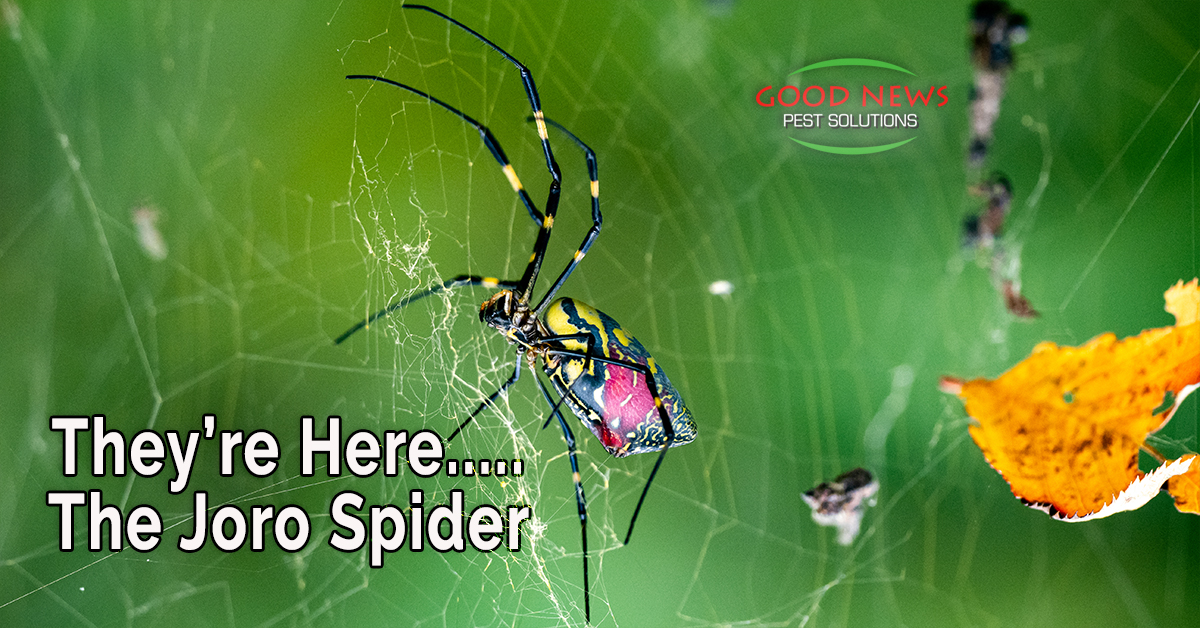
They're Here.... Joro Spiders Sighted!
Two years ago, we told you about a new, very active orb weaver spider that somehow ended up in the United States from its Asian origins about 10 years ago. At the time, Joro spiders had spread to several parts of the US and could manage to survive even in the colder Midwest states.
When we first mentioned them around 2022, they had made it to Georgia. They’ve also been spotted in South and North Carolina, Alabama, Maryland, Oklahoma, West Virginia and Tennessee.
Spoiler Alert: although they travel significant distances, they’re only now expected to penetrate the Sunshine State sometime later this year.
Researchers at the University of Florida are using mud dauber wasps – known to hunt spiders – to keep an eye out for Joro spiders. While they haven’t yet reported the presence of the spiders, there have been some unconfirmed sightings.
Here’s what you can keep an eye out for in the coming months.
Big, Scary, and Mostly Harmless
As we mentioned, Joro spiders are orb weavers – these are the type of arachnids who spin those wide crazy webs we manage to walk into face first when we’re in the woods or ducking around low hanging maple or cypress trees.
Joro spiders are a close relative to the Australian Tiger spiders or the golden silk spider – but with double the metabolism that allows them to survive even in our winter weather.
When Trichonephila clavata arrived – likely in a shipping container from Japan – their biology began to adapt to our climate conditions. Joro spiders use a technique known as ballooning where they release silk threads into the air, allowing them to be carried by the wind. Newborn hatchlings jet off in web parachutes that can travel up to 100 miles.
While Joro spiders are from Japan, they can be found in Korea, Taiwan and China. Their common name finds its origins in Japanese mythology. Jorōgumo, the spider spirit, disguises itself as a beautiful woman to prey on men. Female Joro spiders sport bright blue, yellow and red markings, while the males are boring brown. They measure up to four inches across from leg to leg, with inch long bodies.
While these spiders look big and dangerous, they actually aren’t. In fact, entomologists at the University of Georgia say Joro spiders may be the shyest spider ever documented. And while they can secrete venom with their bite, their fangs are too small to penetrate our skin.
A Welcome Invasion
There is one advantage Trichonephila clavate could bring to the Gulf Coast of Florida – like most orb weaver spiders, they catch and eat annoying insects like cockroaches, house flies and mosquitoes.
Of course, if you don’t want to wait for the spiders to show up, our Good News Pest Solutions Mosquito Protection Program creates “No Bite Zones” in your yard. This exclusive solution transforms biting momma mosquitoes into vegans. It’s affordable, effective and we can deliver it to your door during your regularly scheduled service. For more information, please give us a call!
« Back to Blog
Proudly Serving
Sun City Center, Ruskin, Palmetto, Parrish, Ellenton, Bradenton, Anna Maria, Holmes Beach, Bradenton Beach, Longboat Key, Lakewood Ranch, University Park, Myakka City, Sarasota, Siesta Key, Osprey, Nokomis, Casey Key, Venice, Englewood, North Port, Port Charlotte, Punta Gorda, Arcadia
Things You Can Do
Pay Your Bill Online
Leave Us a Review
Request a Free* Termite Inspection
Stop Mosquito Bites
Get Rid of Rodents
Get a Termite Damage Warranty
Get Pest Control for Your Attic
Get Pest Control for Your Business Request Prayer
Corporate Address
1080 Enterprise Court, Ste A
North Venice, FL 34275
Call Now: (941) 412-9610
Text: (941) 412-9610
Fax: (941) 412-0080
